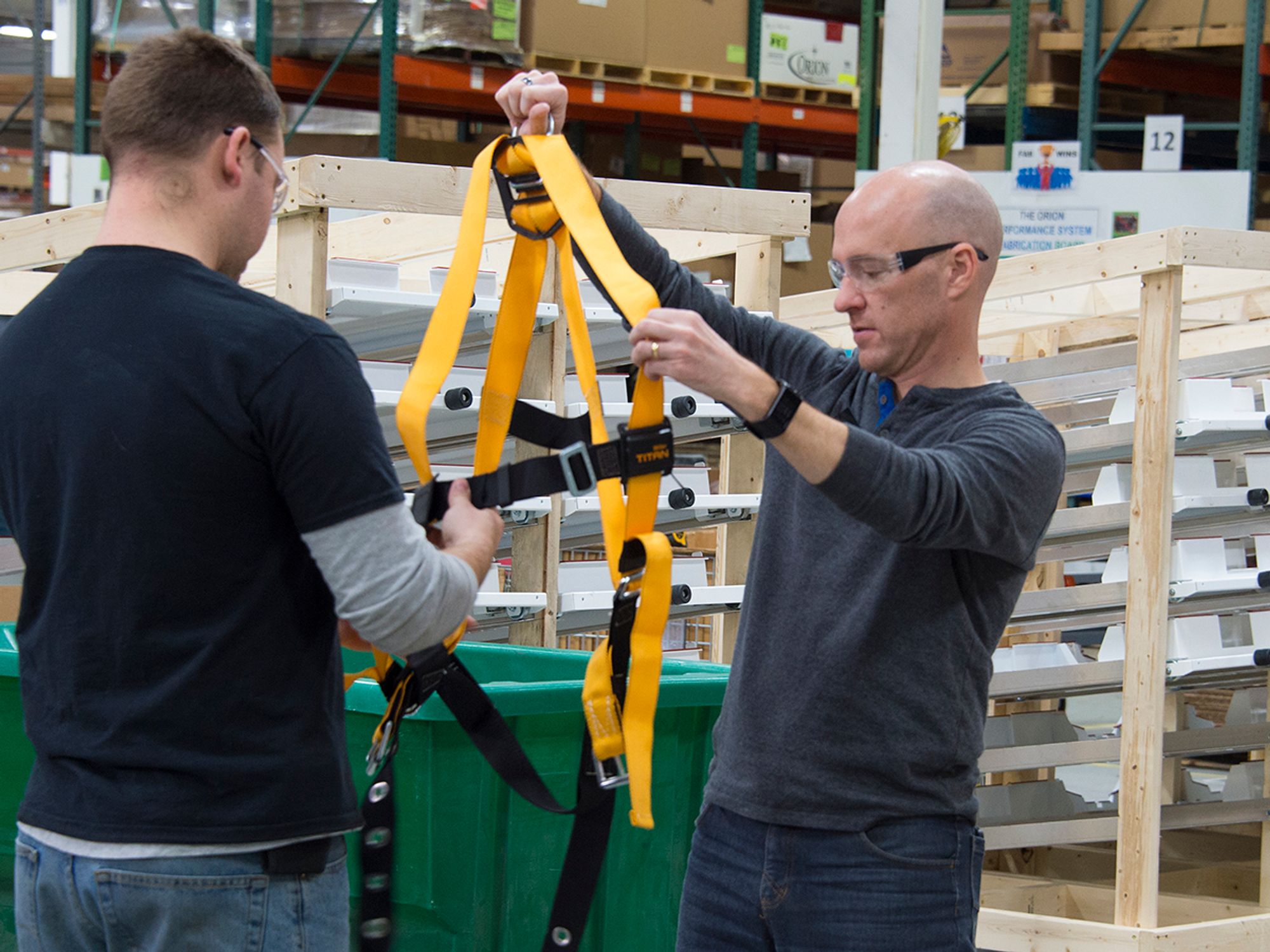Key definitions for General Industry

- Key terms for General Industry employers are defined in this section.
Dangerous equipment: Any equipment, such as vats, tanks, electrical equipment, machinery, equipment or machinery with protruding parts, or other similar units that, because of their function or form, may harm an employee who falls into or onto the equipment.
Designated area: A distinct portion of a walking-working surface delineated by a warning line in which employees may perform work without additional fall protection.
Fall hazard: Any condition on a walking-working surface that exposes an employee to a risk of harm from a fall on the same level or to a lower level.
Fall protection: Any means used to protect workers from falls during work in areas where fall hazards exist. This can include railings, personal fall arrest systems, netting, and other means.
Guardrail system: A barrier erected along an unprotected or exposed side, edge, or other area of a walking-working surface to prevent employees from falling to a lower level.
Hoist area: Any elevated access opening to a walking-working surface through which equipment or materials are loaded or received.
Hole: A gap or open space in a floor, roof, horizontal walking-working surface, or similar surface that is at least 2 inches (5 cm) in its least dimension.
Low-slope roof: A roof that has a slope less than or equal to a ratio of 4 to 12 (vertical to horizontal).
Lower level: A surface or area onto which an employee could fall. Such surfaces or areas include, but are not limited to, ground levels, floors, roofs, ramps, runways, excavations, pits, tanks, materials, water, equipment, and similar surfaces and structures, or portions thereof.
Opening: A gap or open space in a wall, partition, vertical walking-working surface, or similar surface that is at least 30 inches (76 cm) high and at least 18 inches (46 cm) wide, through which an employee can fall to a lower level.
Toeboard: A low protective barrier that is designed to prevent materials, tools, and equipment from falling to a lower level, and to protect employees from falling.
Unprotected sides and edges: Any side or edge of a walking-working surface (except at entrances and other points of access) where there is no wall, guardrail system, or stair rail system to protect an employee from falling to a lower level.
Walking-working surface: Those areas where slips, trips, and falls can occur. Walking-working surfaces include walkways, floor openings, platforms and other raised surfaces, ladders, and stairways.
Warning line: A barrier erected to warn employees that they are approaching an unprotected side or edge, and which designates an area in which work may take place without the use of other means of fall protection.
